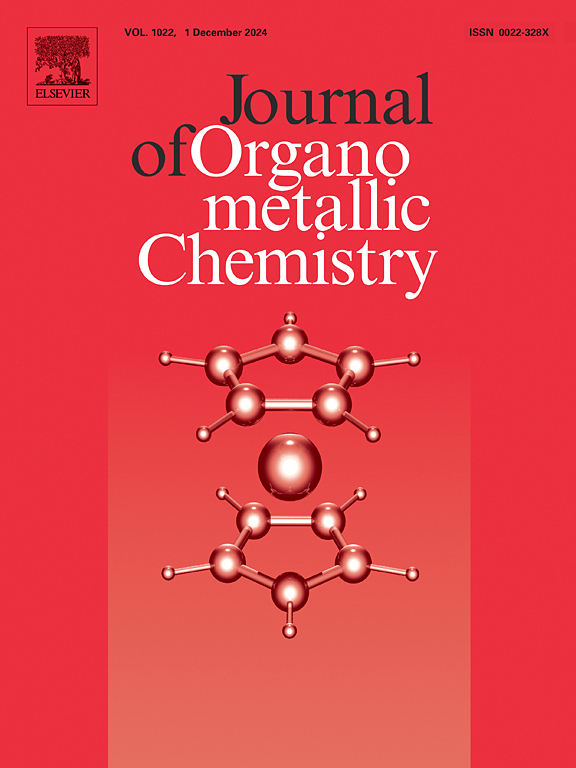A combined experimental and theoretical investigations of structure and luminescence in mono− and di−nuclear copper(I) complexes containing N^P−type iminephosphine ligand
IF 2.1
3区 化学
Q3 CHEMISTRY, INORGANIC & NUCLEAR
引用次数: 0
Abstract
Mononuclear and dinuclear copper-iodide complexes (1 and 2) based on a new benzimidazole-phosphine (N^P) ligand have been synthesized. Both complexes exhibit yellowish-green phosphorescence at ambient temperature. Notably, the dinuclear complex 2 achieves high photoluminescence quantum yield (PLQY) of 49 %, which is considerably higher than that (6 %) observed for the mononuclear counterpart 1. The theoretical and experimental investigations suggest that the Cu2I2 core in 2 could increase in structural rigidity as well as promote the intersystem crossing (ISC) process, leading to high PLQY values as well as short radiative decay time of 4.42 μs. This work is expected to inspire further research on developing copper−iodide complexes for efficient luminescence.

含N^P−型亚胺膦配体的单核和二核铜(I)配合物的结构和发光的实验和理论研究
合成了一种新型苯并咪唑-膦(N^P)配体的单核和双核碘化铜配合物(1和2)。两种配合物在环境温度下均呈现黄绿色磷光。值得注意的是,双核配合物2实现了49%的高光致发光量子产率(PLQY),这大大高于单核配合物1所观察到的6%。理论和实验研究表明,2中的Cu2I2芯可以提高结构刚度,促进系统间交叉(ISC)过程,从而获得较高的PLQY值和较短的辐射衰减时间(4.42 μs)。这项工作有望激发对开发高效发光的碘化铜配合物的进一步研究。
本文章由计算机程序翻译,如有差异,请以英文原文为准。
求助全文
约1分钟内获得全文
求助全文
来源期刊

Journal of Organometallic Chemistry
化学-无机化学与核化学
CiteScore
4.40
自引率
8.70%
发文量
221
审稿时长
36 days
期刊介绍:
The Journal of Organometallic Chemistry targets original papers dealing with theoretical aspects, structural chemistry, synthesis, physical and chemical properties (including reaction mechanisms), and practical applications of organometallic compounds.
Organometallic compounds are defined as compounds that contain metal - carbon bonds. The term metal includes all alkali and alkaline earth metals, all transition metals and the lanthanides and actinides in the Periodic Table. Metalloids including the elements in Group 13 and the heavier members of the Groups 14 - 16 are also included. The term chemistry includes syntheses, characterizations and reaction chemistry of all such compounds. Research reports based on use of organometallic complexes in bioorganometallic chemistry, medicine, material sciences, homogeneous catalysis and energy conversion are also welcome.
The scope of the journal has been enlarged to encompass important research on organometallic complexes in bioorganometallic chemistry and material sciences, and of heavier main group elements in organometallic chemistry. The journal also publishes review articles, short communications and notes.
 求助内容:
求助内容: 应助结果提醒方式:
应助结果提醒方式:


